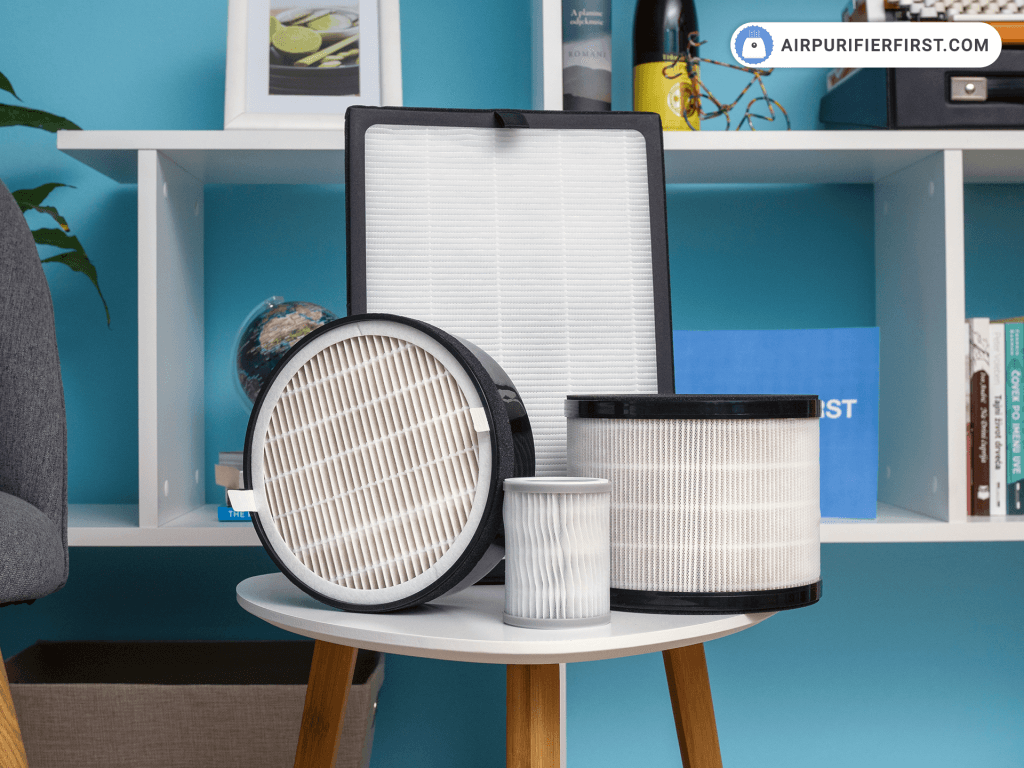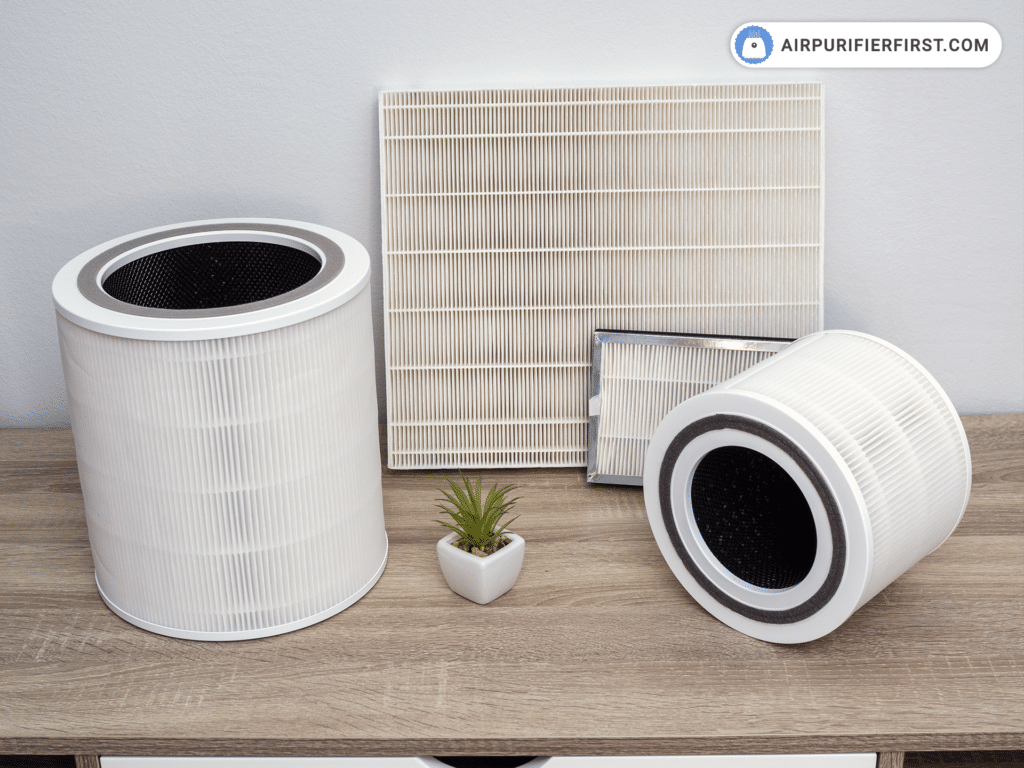HEPA filter stands for the best air-filtering technology. There is nothing better than the True HEPA filter when we talk about filtering air. And the reason for that is simple; all the filters are tested in a particular test and then labeled True HEPA filter or something else. If filters are in standard HEPA ratings, then they will be marked with a HEPA label. HEPA filters are used in various tools that filter air or need filtered air. We will cover all about these devices later in this article.

Table of Contents
- What Does HEPA Mean?
- Who Invented the HEPA Filter?
- How Do HEPA Filters Work?
- How Big Are Microns?
- From What is HEPA Filter Made?
- What Happens To Particles When They Penetrate The HEPA Filter?
- Are All HEPA Filters The Same?
- Pros of HEPA Filter
- Cons of HEPA Filter
- Can You Wash HEPA Filter?
- Where Are HEPA Filters Used?
What Does HEPA Mean?
HEPA stands for high-efficiency particulate air. It is an air filter efficiency standard. However, there is a big difference between HEPA, HEPA-like HEPA style, or HEPA type filters. Some manufacturers even use 99% HEPA in labeling their filters. Some of them are also calling their filters HEPA and don’t pass the tests. That’s why many brands that do pass a HEPA test now use the True HEPA filter label. The only reason for that is that there are many false HEPA claims.
Who Invented the HEPA Filter?
Germans used the first HEPA filters during World War II. The British army found a HEPA filter inside one of the German gas masks. Brits reproduced it and started mass production. However, a True HEPA filter was tested and developed in the 1940s. The Manhattan Project was working on catching airborne radioactive contaminants. After a decade in the 1950s, the first trademark was registered and commercialized.
How Do HEPA Filters Work?
HEPA filters capture particles that are entering the filtration device. Most of them use fans to suck air and filter it that way. Once particles get into the system, it is up to the HEPA filter to catch them. A True HEPA filter is capable of capturing 99.97% of airborne particles down to 0.3 microns. In the European Union, standards are put at 99.95%.
When particles go into the HEPA filter, there are four ways of capturing them.
Direct Impact
Large particles can be caught by direct impact. The particle simply hits the filter and hangs there.
Sieving
When a particle is larger than the gap in the filter, they get stuck in the hole.
Interception
Small particles that can go through the gap thanks to the inertia of a pulling air will help stick them at the side of the fiber.
Diffusion
Ultrafine particles are light, and they move at a fast speed. It is about the moment they will hit the fiber and stick to it.
How Big Are Microns?
It is hard to explain how small a micron is, but let’s say one inch is 24500 microns. I bet the number doesn’t help much. Let’s look at some things that are measured in microns then. Human hair ranges between 17 and 181 micros, which is still way larger than 0.3 microns. Sand is around 65 microns. Things that we can’t see with the naked eye, like dust mites, are around 100 to 300 microns, bacteria 1 to 10 microns. And the smallest ones are tobacco smoke from 0.01 microns to 4 microns and Viruses from 0.005 to 0.3 microns.
Now you probably think that the smaller the particle, the harder it is to catch it. That is not true, some small particles are rapidly sucked into the filter, and they move in a zig-zag pattern, which in the end makes them easier to catch than 0.3 microns particle. 0.3-micron particles are the hardest to catch, and because of that, the HEPA standard is measured against 0.3-micron particles. Some filter brands may use this fact to their advantage and claim that their filter can catch smaller particles. In fact, any decent HEPA filter can do, but the question is how good are against 0.3-micron particles.
From What is HEPA Filter Made?
Usually, these advanced filters are made from interlaced glass fibers. Fibers are combined together into twisted directions, which looks like a maze made from fibrous. This web maze pattern is the reason why HEPA filters are so effective.
What Happens To Particles When They Penetrate The HEPA Filter?
Many airborne particles, especially if they are small, have a good chance of penetrating the HEPA filter. Sometimes particles get lucky and go through the filter. These particles will be released back into the air if they manage to go pass other filters that are coming after the HEPA filter.
Some devices have additional filters like a carbon filter, which can additionally catch pollutants. Some of the devices even use ions to combat air pollution. But if the particle goes through the HEPA filter, there is a high chance we will breathe it. That’s why if the pollution is high, you need to wait for the device to clean the population by sucking the same particles over again. If they got lucky to go through the first time the second time, they might not be so fortunate.
And because of that, it is best to replace HEPA filters regularly to keep the efficiency at a higher standard. Only by regular filter replacement, you can be sure that particles won’t penetrate the HEPA filter in high percentage. Usually, the HEPA filter needs to be replaced every 6 to 18 months depending on the filter model and pollution in the operating environment.
Are All HEPA Filters The Same?
Not all HEPA filters are the same. HEPA filters in Europe need to catch 99.95% of airborne particles larger than 0.3 microns, while in the US, standards are higher, and HEPA filter needs to capture 99.97%.

However, many filters are labeled HEPA, but they don’t meet standards. Always read the correct ratings of the filter to know if the filter is truly HEPA standard. Many filters are not even tested, and marketers use the HEPA label in their branding anyway. Be smart, and don’t fall into that trap if you genuinely want to buy HEPA standard filter.
What Is a MERV Rating?
MERV stands for Minimum Efficiency Reporting Values. It is a rating that measures filter efficiency to capture particles between 0.3 and 10 microns. The higher the MERV rating, the better the filter efficiency. HEPA filter needs to meet at least a MERV rating of 17 to be considered HEPA in the USA. While in the EU, even the MERV 16 rating is considered HEPA.
| MERV Rating | Average Particle Size Efficiency in Microns |
|---|---|
| 1-4 | 3.0 – 10.0 less then 20% |
| 6 | 3.0 – 10.0 49.9% |
| 8 | 3.0 – 10.0 84.9% |
| 10 | 1.0 – 3.0 50% – 64.9%, 3.0 – 10.0 85% or greater |
| 12 | 1.0 – 3.0 80% – 89.9%, 3.0 – 10.0 90% or greater |
| 14 | 0.3 – 1.0 75% – 84%, 1.0 – 3.0 90% or greater |
| 16 | 0.3 – 1.0 75% or greater |
| 17 | <0.3 99.97% or greater |
Differences Between True HEPA and Other HEPA Filters
True HEPA, as already said, is just a marketer word that makes sure that the particular filter has a real HEPA standard. On the other hand, some other filters with HEPA label or without it are never tested. Or they have been tested but did not pass a test. They can do as close as it gets to HEPA standard, but they did not meet the HEPA standard requirement, and because of that, they can’t be called HEPA.
Those other HEPA-labeled filters can remove 85 to 99% of airborne particles down to 0.3 microns. Considering that these not true HEPA filters are more affordable than a true HEPA filter, in the end, they do have their own purpose and usage.
Pros of HEPA Filter
Effective
HEPA Filters are known as the most effective way of filtering air. They work so well that they are even used in hospitals.
Used in Different Fields
Used in different industries, hospitals, homes, cars, public places, vacuum cleaners, air purifiers, and other consumer products.
Cons of HEPA Filter
Expensive
HEPA filters need to be replaced, and because of that, they are costly. Even the initial cost is a bit higher than if you were buying a normal filter. But with investment comes value.
Don’t Remove Odors
HEPA is best at removing dust, pollen, mold spores, and other airborne particles. But when we look at removing the bad smell, chemicals, or unwanted odor HEPA filter is useless. You should know this fact before you decide and make the mistake of buying a HEPA filter to remove odor.
Can You Wash HEPA Filter?
By no means you can not wash the HEPA filter. HEPA filters are designed in a particular way, and every interference with the filter may damage the filter structure, and your HEPA filter may act as a regular filter. In other words, if you damage the filter in any way, it won’t have HEPA standard efficiency. Because of that, we are not washing HEPA filters. If for some reason, your manufacturer labeled HEPA filter as washable, I would double-check if I really own a True HEPA filter. And if I really do have HEPA standard filter, I would still not wash it.
The same goes for vacuuming. Vacuuming a HEPA filter is also not recommended for the obvious reasons stated above. Vacuuming can damage the HEPA filter structure, and the efficiency of the damaged filter will drop.
Where Are HEPA Filters Used?
Today we can find HEPA filters in many devices. HEPA filters are used in homes, hospitals, the industry, the nuclear industry, the food industry, pharmacies, vehicles, and other facilities that can benefit from clean air. At home usage, we can find HEPA filters in vacuum cleaners, air conditioners, air purifiers, dehumidifiers, humidifiers, ventilation systems, and other devices that require clean air.
Uh, dead/old comments, but anyway, Dale was asking for approximate price for classification MERV 17 filters in boxes of 8 to 10 units each.
For those of us that find our way here in the future, it would be nice to know reasonable approximate current prices for True HEPA filters?
Hi, I can’t provide a general price as many manufacturers offer very different prices. You can find True HEPA filters for as cheap as $20, but some can be much more expensive.
I’m nedding to purchase a supply of hepa filters. I understand the #17 is the best. They will be placed in masks and will be changed daily with the masks being washed daily in Lysol that will kill the civic virus. Please let me know how much one to 8 -10 boxes would be. Additionally, how many are in a box. These will be used for school age children.
Thanks
If you take look at the efficient row in the table you will see that 8 – 10 aren’t too efficient comparing to 17 or any other higher number.